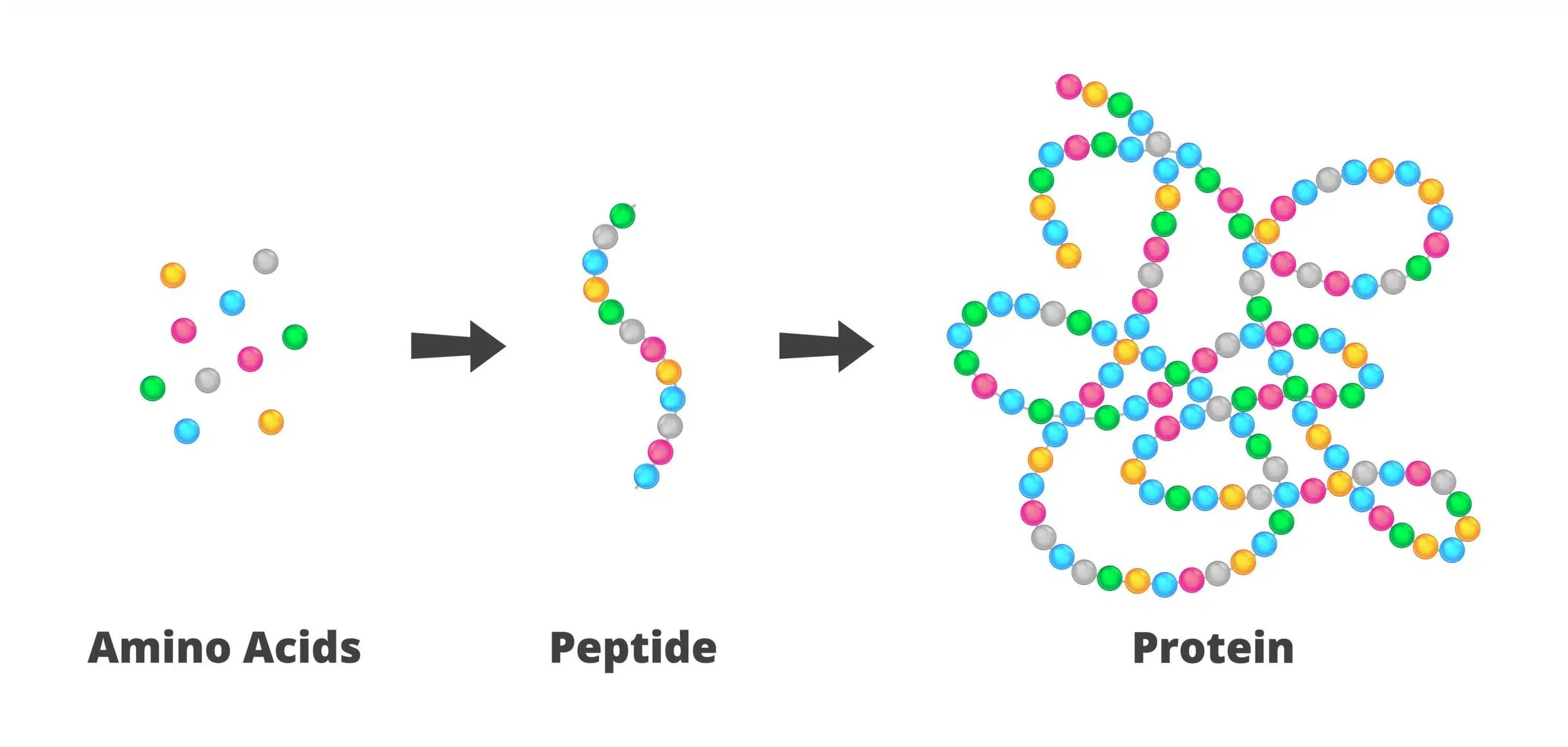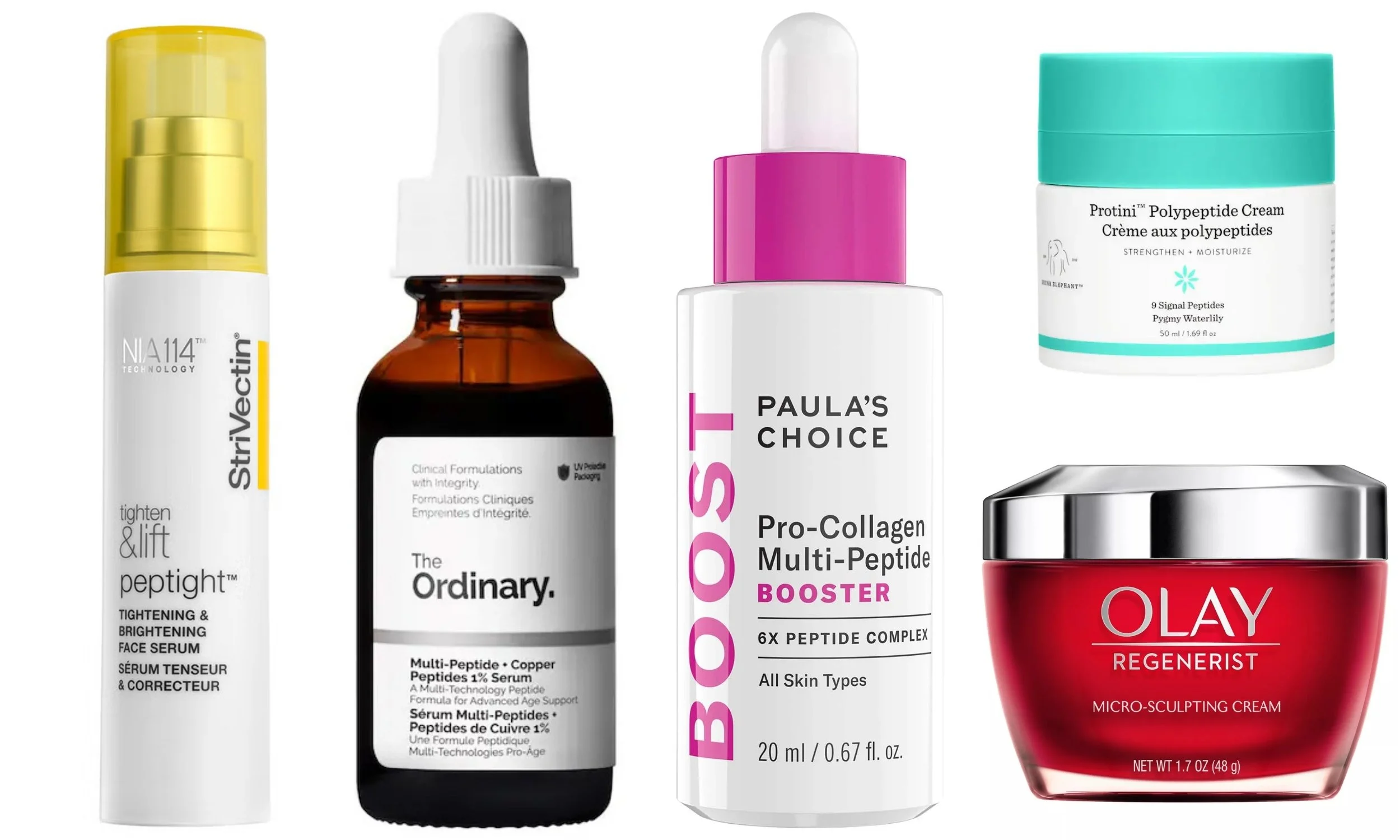🧬 Everything You’ve Heard About Peptides Might Be Wrong — Here’s What the Studies Say
This post contains affiliate links. As an Amazon Associate, I earn from qualifying purchases—at no extra cost to you. I only recommend products I truly believe in.
🧪 The Peptide Hype Is Real… But Is It Deserved?
If you’ve spent more than five minutes in the anti-aging skincare aisle (or, let’s be real, on TikTok), you’ve probably heard that peptides are the ingredient. They boost collagen! Erase wrinkles! Fix your life! (Okay, maybe not that last one—but some brands definitely want you to think so.)
The problem? Most of the internet is just repeating marketing copy like it’s gospel. One influencer’s “holy grail peptide serum” is another person’s overpriced goo doing absolutely nothing.
So what’s the truth? Do peptides actually work, or are we all just smearing glorified protein fragments on our faces and hoping for the best?
Here’s the deal: peptides can be amazing—but only when they’re the right kind, in the right formula, used the right way. And yes, there’s actual peer-reviewed science to back this up (we’re not playing the vibes game here).
Let’s break down what peptides are, what they actually do, and what you can skip—because good skincare isn’t magic. It’s science.
🧬 What Even Are Peptides? (And Why Should I Care?)
Alright, let’s decode the buzzword. A peptide is basically a short chain of amino acids—the same building blocks that make up proteins like collagen and elastin. Think of them like tiny messengers that walk into your skin cells like, “Hey, we need more bounce in here.”
In skincare, peptides are added to products to tell your skin to do stuff—like make more collagen, heal damage, or chill out with the inflammation. They’re like motivational speakers for tired skin.
But here’s where it gets spicy: not all peptides do the same thing. There are several different types:
Signal peptides tell your skin to start producing collagen and elastin.
Carrier peptides help deliver trace minerals to support skin repair.
Neurotransmitter-inhibiting peptides (hi, Botox alternatives 👀) relax facial muscles to soften fine lines.
Enzyme-inhibiting peptides slow down processes that break down collagen.
Sounds fancy—and it is—but don’t let the jargon fool you. Just because a product says “peptide” on the label doesn’t mean it’s doing anything useful.
The key is knowing what type of peptide is in your product, and whether it’s in a formula that can actually penetrate your skin and do its job.
Spoiler alert: we’re about to call out the fakes.
❌ Peptide Myths That Need to Retire Immediately
Peptides might be powerful, but let’s be honest—the skincare industry loves to slap “peptide” on a label and charge you $85 for the privilege. And in all that hype, some truly ridiculous myths have been born. Let’s break them down and bring a little science to the party.
🧢 Myth #1: Peptides Erase Wrinkles Overnight
Wouldn’t that be cute? Unfortunately, peptides are not magic erasers. Yes, they can help improve firmness, smoothness, and fine lines—but it takes time. In clinical studies, most peptide formulations took 8–12 weeks of consistent use to show visible results. So if you’re expecting an overnight facelift, you’re going to be disappointed (and probably out $120).
🧃 Myth #2: More Peptides = Better Results
It’s not a smoothie. Throwing 11 peptides into one product doesn’t mean it’s more effective—it usually means the brand is flexing on the label. What matters is which peptides are used, how stable they are in the formula, and whether the delivery system actually gets them into your skin. Quantity ≠ quality.
💸 Myth #3: If It Says “Peptide,” It’s Automatically Good
Marketing is sneaky. Brands love to toss in a sprinkle of peptide, bury it in the ingredient list, and charge premium prices. But if it’s paired with irritating ingredients, unstable packaging, or an awful base formula? That peptide’s doing about as much as a motivational quote on your bathroom mirror.
Bottom line: Peptides are promising—but only when they’re part of a smart, well-formulated product. The rest? Pretty packaging and wishful thinking.
Let’s look at what actual clinical studies say. Because your skin deserves more than marketing claims. 👇
🔬 Okay, But Do They Actually Work? (Science, Please.)
Alright, time to step out of the marketing department and into the lab. What does real science say about peptides? Are they just glorified amino acid sprinkles, or do they actually do something when rubbed into your face?
Spoiler: they do. But like most things in skincare, it’s a slow burn—not a magic trick.
🧪 Collagen Production
In one randomized, double-blind study, participants using a peptide-rich cream (with palmitoyl pentapeptide-4, aka Matrixyl) saw a significant increase in collagen production and skin thickness after 12 weeks.¹ Translation? Peptides can help your skin look firmer and more resilient—just give it a few months.
🧼 Wrinkle Reduction
Another clinical trial using a topical with acetyl hexapeptide-8 (a neuropeptide sometimes dubbed “Botox in a jar”—calm down, it’s not) showed a visible decrease in wrinkle depth, especially around the eyes.² But again—it didn’t work overnight, and the effect was subtle, not surgical.
💦 Hydration & Barrier Support
Some peptides (like copper peptides and palmitoyl oligopeptides) have been shown to boost skin hydration, improve elasticity, and support barrier repair.³ This means less dryness, less flaking, and fewer angry red patches—especially helpful if you’re using actives like retinol or acids elsewhere in your routine.
😬 Limitations (Because We’re Honest Here)
Many studies are funded by the brands who make the products. That doesn’t mean the data’s fake—but it does mean we have to read it with a raised eyebrow and a healthy dose of skepticism. Also: most studies are small, short-term, and rarely compare peptides directly against other actives like retinoids.
The Bottom Line?
Yes, peptides can work—especially for firmness, hydration, and smoothing—but they’re not miracle workers and they need time. Think of them like skincare support staff: not flashy, not fast, but they quietly keep things running better in the background.
Next up: how to actually use them without throwing money down the drain. 💸
🧴 How to Use Peptides Without Wasting Your Money
You’ve got your eye on a fancy serum with “peptide complex” in bold font. Before you drop $$$ and emotionally commit, let’s talk strategy—because even the best peptides won’t do a thing if you use them wrong.
⏰ When to Use Them
Peptides are low-drama and play well with others, so they’re perfect for both morning and night routines. Bonus: they’re non-irritating, so you don’t have to worry about peeling or purging like you do with retinoids.
Want to use them with vitamin C, acids, or retinol? You totally can—just sandwich them between pH-sensitive steps. Cleanse → tone (if you do) → actives → peptides → moisturizer. They don’t cancel each other out, no matter what skincare Reddit says.
🔍 What to Look For
Ignore the hypey claims and flip to the ingredient list. Look for actual named peptides like Matrixyl 3000 (palmitoyl pentapeptide-4), Argireline (acetyl hexapeptide-8), GHK-Cu (copper peptides), or oligopeptides near the top third of the list.
And while we’re at it: the rest of the formula matters too. A good peptide serum will also include things like hyaluronic acid, niacinamide, or ceramides to support your barrier and help lock in those benefits.
🧴 How Often to Use
Every day, baby. Consistency is key. Unlike actives that need cycling or buffering, peptides thrive with daily use—ideally morning and night.
Bottom line: you don’t need to spend $300 on a gold-plated jar of peptide soup. You just need a well-formulated product and a bit of patience.
These Peptide Products Are Actually Worth It
You don’t need a dozen jars of overpriced “peptide complex” creams—you just need a few that are actually well-formulated and backed by science. These are the ones that deliver.
StriVectin Peptight™ Tightening & Brightening Serum
Key peptide: Argireline (acetyl hexapeptide-8)
Targets fine lines and dullness with a firming complex and real, named peptides. This one’s for you if you want your skin to feel tighter and look a little more “yes, I sleep.”
Drunk Elephant Protini Polypeptide Cream
Key peptides: Matrixyl 3000 components + oligopeptides
This protein-rich cream includes nine signal peptides—like palmitoyl tripeptide-1 and tetrapeptide-7 (Matrixyl 3000) plus oligopeptides that help with firmness, bounce, and hydration.
The Ordinary Multi-Peptide + Copper Peptides 1%
Key peptides: Matrixyl 3000, Argireline, and GHK-Cu (copper peptides)
The trifecta. Budget-friendly but loaded with powerhouse peptides. If you're only trying one, this is the smartest bang-for-buck option out there.
Paula’s Choice Peptide Booster
Key peptides: Matrixyl 3000, Argireline, and oligopeptides
Lightweight, no-fuss, and full of well-studied peptides. Great for softening fine lines, improving firmness, and slotting easily into any routine.
Olay Regenerist Micro-Sculpting Cream
Key peptide: Matrixyl (palmitoyl pentapeptide-4)
This drugstore favorite contains one of the most studied peptides in skincare and backs it with niacinamide and hyaluronic acid. If you want real results on a budget, this is the sleeper hit.
🧠 The Bottom Line on Peptides
Peptides aren’t total nonsense—but they’re also not skincare sorcery. They can help boost collagen, smooth out fine lines, and keep your skin barrier from throwing a tantrum... if the formula actually gives them a chance to work.
The key? Skip the mystery “peptide complex” hype and go for products with real, named peptides that show up early on the ingredient list—not buried behind lavender oil and dreams.
And please—don’t expect an overnight facelift. Peptides are more “steady improvement over 12 weeks” than “Insta-filter in a jar.”
So yes, they’re worth it. Just not in a miracle-cure, glow-up-in-48-hours kind of way.
✨ Skincare isn’t magic. It’s science.
Want to Dig Deeper?
If fine lines and rough patches are your main gripes, the quickest mover is still a retinoid— here’s how to pick one that actually suits your skin type.
For the morning shift, keep brightness climbing with an antioxidant that’s been shown to work— this vitamin C guide separates real glow from marketing sparkle.
And to avoid turning your face into a chemistry experiment, use this quick cheat sheet for what to layer with retinol—and what to keep far, far away.



